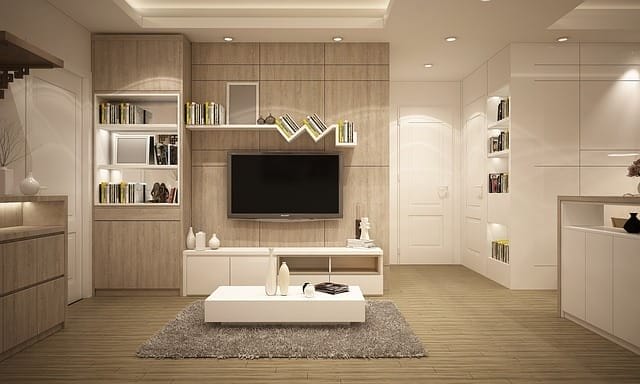Best Primer For Kitchen Cabinets
With so many beautiful cabinet designs now available, you might be tempted to give your own cabinets a facelift. But before you start painting, there’s one key step you should consider – primer. The main objective is a smooth finish at its end.
Selecting the right primer for your kitchen cupboards or bathroom cupboards is an important step, especially if you plan on painting cabinets. You don’t want to end up with a dull, chalky surface after painting.
Acrylic primers work well for most applications, including kitchens and bathrooms. However, they may not be suitable for certain finishes, such as oil-based products. Waterborne primers are thinner and easier to apply, making them ideal for kitchens and bathrooms.
So, what do you need to know about choosing the best primer for kitchen cups?
Primers are used to prepare surfaces for paints and stains. There are two types of primers: acrylic and waterborne. Acrylic primers are typically thicker and last longer than waterborne primers.
Waterborne primers are usually applied using spray cans. They come in either latex or alkyd varieties. Alkyds are made from vegetable oils and are less expensive than latex primers. It sprays very well onto a smooth finish.
If you’re planning on painting dark wood cabinets, you’ll probably want to opt for a waterborne primer. These primers are thin enough to cover imperfections and cracks in the wood.
Another benefit of waterborne primers is that they tend to dry faster than acrylic primers. This means you won’t have to wait long between coats.
However, waterborne primers aren’t suitable for every application. Some people prefer acrylic primers because they provide better coverage.
Regardless of which type of primer you decide to use, it’s important that you follow the manufacturer’s instructions carefully. Otherwise, you risk damaging your cabinets.
Once you’ve chosen the best primer for the kitchen cabinet, you’ll need to prep the surface properly.
Before applying the primer, clean the surface thoroughly. Remove dust and dirt by wiping down the surface with a damp cloth. Then, remove any loose material by sanding the surface.
Next, apply the primer using a brush or roller. Apply even layers until the entire surface is covered. Allow the primer to dry completely before moving on to the next step.
Apply at least three coats of primer. Wait 24 hours between each coat. Afterward, wipe away excess primer with a rag dipped in warm water.
After the final coat dries, apply a sealant. Sealants protect the primer and prevent moisture from penetrating the surface.

Zinsser BIN Shellac Primer
This Zinsser BIN Shellac Primer is the best choice for cabinets and great for getting a nice finish on kitchen cabinetry. It’s a shellac-based priming agent that works well on wood surfaces. It’s ideal for sealing and protecting wood against moisture, stains, scratches, and wear.
You can apply Zinsser BIN directly to wood surfaces or mix it with water to form a thin paste. Then, you can brush and roll it onto the cabinet door. Afterward, let it dry completely before applying another layer of stain.
The dry time is fast, usually less than an hour, making it easy to apply two coats to the door. If you do decide to apply two coats, wait 24 hours between applications. Zinsser BIN Shellac is the best primer for kitchen cabinets.
The cost is about $42 a gallon, but you can find it at most hardware stores using discounted account pricing.
Zinsser Cover Stain Oil-Based Primer
Cover stain oil-based primer is a great choice for kitchen cabinet primers. It’s cheap, fast-drying, and easy to apply. However, it’s not suitable for high gloss finishes. You’ll find Zinsser Cover Stain at Home Depot and Lowes.
You may also want to consider Zinsser Cover Stain for painting exterior wood surfaces. It’s ideal for outdoor applications where water resistance is essential.
Sherwin Williams Pro Block Oil Primer
This primer is great for laminate cabinets. It works extremely well and dries incredibly fast. It’s also odorless, so there’s no lingering scent.
The only downside to using this primer is that it does leave a slight film behind. However, it’s not noticeable unless you look closely.
You can either spray this product or use it with a roller. Either way, it’s a great option for sealing kitchen cabinets.

What Does A Primer Do?
Primers are used to add extra protection to painted surfaces. They are usually applied after the base coat of paint has dried, but before applying any additional coats of paint.
Primers come in two types: acrylic primers and enamel primers. Acrylic primers are typically thinner than enamel primers and work better on porous surfaces. Enamel primers are thicker and work better on smooth surfaces.
Acrylic primers are great for protecting against scratches, stains, odors, and fading. They are also ideal for sealing porous surfaces like wood, stone, tile, concrete, brick, metal, etc.
Enamel primers are great for adding shine to shiny surfaces like glass, chrome, stainless steel, aluminum, etc. They are also ideal to protect against scratches, stains, fading, and odors.
You’ll find that using a primer will help you to apply fewer coats of paint. You may even be able to skip the primer altogether depending on the type of paint you are using.
Use a primer to protect your prime cabinet doors from scratching, fading, and odors.
Do Cabinets Need To Be Primed?
Cabinets should never be painted directly onto the wood. Wood needs to be primed before being painted. You’ll find varying opinions online regarding whether or not you need to prime your cabinets before painting them. Personally, I’ve found that it gives me a smoother surface and makes the final product look better. However, if you prefer to skip the priming process, you can certainly do so.
There are pros and cons to either option. Some people say that you shouldn’t prime your cabinets at all. Others claim that you absolutely must prime your cabinets before painting. Ultimately, it depends on your preference and budget.
If you decide to prime your cabinets, there are two types of primers you can use: oil-based and water-based. Oil-based primers tend to dry faster than water-based ones, but they also require multiple coats to achieve the desired results. Water-based primers work great, but they may leave streaks behind.
Regardless of which type of primer you choose, make sure you apply it evenly and thoroughly. You can use a foam roller or brush to apply the primer. Once the primer dries completely, you can begin applying your color coat.

What To Consider When Choosing The Best Primer For Kitchen Cabinets
Primers are used to prepare surfaces for painting. There are two main categories of primers: stain blockers and stain repellants. Stain blockers prevent staining by filling in tiny cracks and pores on the surface. Stain repellants repel stains by preventing oils and waxes from penetrating the surface.
Stain blockers are usually applied directly after sanding or stripping. However, there are times when you may want to apply a stain blocker over another layer of glossy primer. For instance, if you’re refinishing a piece of furniture, you might want to apply a stain-blocking primer over a general-use primer.
Stain repellants are generally applied over a top layer of paint. These primers are designed to keep stains out of the surface. Some stain-repellant primers contain silicone which helps to protect against moisture and mildew. Others contain UV inhibitors which help to protect against fading.
If you’re going to paint your cabinets, you’ll probably want to use a stain-blocker primer. But, if you’re refinishing them, you’ll want to use a stain-repellant primer instead.
You can find stain-blocking primers at any hardware store. Most of these primers come in spray cans. If you prefer to brush on the primer, you can buy a brush specifically designed for applying stain-blocking primers.
Stain-blocking primers are available in three basic forms: latex, acrylic, and alkyl. Latex primers are the least expensive. Acrylic primers are slightly more expensive than latex primers. Alkyds are the most expensive. The difference between the three types of primers is how long they last.
Latex primers tend to wear off faster than acrylic and alkyd primers. This means that latex primers require frequent reapplication. Because of this, latex primers aren’t recommended for refinishing projects.
Acrylic primers tend to hold up longer than latex primers. This makes acrylic primers ideal for refinishing projects. Although acrylic primers are slightly more costly than latex primers, they last longer and provide superior protection.
Alkyd primers are the longest-lasting. They typically last twice as long as latex primers and four times as long as acrylic primers. In fact, many people consider alkyd primers to be the ultimate finishing product.
The key to selecting the right primer for your project depends upon several factors. First, you must decide whether you plan to refinish or repaint your cabinets. Second, you must determine whether you plan to use a latex, acrylic, or alkyd primer. Third, you must select the appropriate application method. Finally, you must select the proper color.
When deciding whether to refinish or repaper your cabinets, you must consider the following:
- Will you be refinishing or re-painting your cabinets?
- What kind of material will you be covering?
- How often will you be doing maintenance?
- How much time will you spend working on the project?

Types Of Primers
There are several types of primers available for oak kitchen cabinets and drawers. Some are waterborne, others oil-based, and still others are solvent-based. Each has its advantages and disadvantages. Here are some of the most common types of paints and primers used today:
Waterborne Primers
Waterborne Primers are applied using water. Waterborne primers are usually formulated for wood surfaces, although there are some products that work well on metal and plastic. These primers come in two varieties: penetrating and non-penetrating.
Penetrating primers
Penetrating primers penetrate deep into the surface of the cabinet and provide excellent adhesion. Non-penetrating primers only coat the surface of the cabinet. They are typically less expensive than penetrating primers and may not adhere as well. It is best for cabinet priming.
Oil-Based Primers
Oil-Based Primers are applied using mineral spirits or another petroleum product. Oil-based primers are generally easier to apply than waterborne primers. However, they tend to leave a sticky residue after application. These are the best primers for oak cabinets because they fill in the wood grain more efficiently than other priming agents.
Solvent-Based Primers
Solvent-Based Primers are formulated with solvents such as acetone, methylene chloride, and xylene. Solvent-based primers are very effective at removing old finishes and preparing the glossy surface for painting. They are also highly flammable and should never be mixed with any combustible materials.
Wood Primers
Wood primers are formulated specifically for wood surfaces. Wood primers contain chemicals that cause the wood to swell and expand. Once the wood swells, it becomes tackier and easier to paint. There are many types of wood primers available, including waterborne, oil-based, and solvent-based.
Some wood primers are designed to seal the wood, making it resistant to moisture. Others are designed to remove stains and protect against future damage. You’ll need to determine which type of wood primer works best for your project.
Shellac-Based (Alcohol-Based) Primers
Shellac-based (alcohol-based) primers come in two varieties: Clear and semi-transparent. Both are excellent choices for light coat paint finishes because they let the original wood show through. Synthetic Shellac is available in a variety of thicknesses, so it doesn’t always brush easily. The odor is moderate and cleaned up with water, denatured alcohol, and soap.
Hybrid Acrylic Urethane Primers
Hybrid acrylic urethane primers are intended to offer the best properties of both oil- and acrylic/latex-based primers in one product. They’ve been designed to be pleasant to use, easy to clean up, and durable. The downside? They may not offer the same levels of odor or stain blocking as some competitors.
Odor And Stain Blocking
Primers are used to protect wood surfaces from scratches, fading, moisture damage, and other issues. Most primers contain chemicals that block out smells and stains. Some products even include anti-microbial additives that kill bacteria and fungi.
While most primers are made from petroleum-derived ingredients, there are several alternatives available today. Oil-based primers tend to perform better than water-based ones because they don’t absorb as much moisture. But if you prefer a water-based version, you’ll still find plenty of options.
Oil-based primers are typically formulated using paraffin waxes, mineral oils, silicone oils, polymers, and resins. Water-based primers are usually made with urethane resins, acrylics, epoxies, and silicones.
Some manufacturers claim that their products are odor- and stain-blasting, but others simply say that they reduce odors and stains without providing any scientific evidence. So it’s important to look closely at the claims and test results of each product.
You should also keep in mind that not every product works equally well on every surface. You may need to try multiple products to determine which one works best for your project.
Surface And Adhesion
Primers are used to provide an adhesive layer between two materials. A primer should be able to stick to the surface of the substrate it is being applied to and then easily accept the paint or lacquer that will cover it.
There are several types of primers available, including oil-based, latex-based, acrylic-based, and water-based. Each type works differently depending upon the application and the surface it is being applied to.
Oil-based primers are typically recommended for bare wood and manufactured composite products like medium-density fiberboard (MDF), particle board, and plywood. These products are usually covered with a glass-like finish, making them difficult to adhere to without a primer.
Latex-based primers are commonly used on plastic laminate countertops, kitchen cabinets, and drawers where the product is finished with a clear protective coating. Latex-based primers do not require any additional steps after applying the primer.
Acrylic-based primers are generally used for exterior applications and are formulated to withstand outdoor conditions. Acrylic-based primers may be brushed onto the surface or sprayed directly onto the surface.
Water-based primers are most commonly used for interior applications. Water-based primers are ideal for finishing furniture because they don’t leave a sticky residue behind. However, water-based primers are less durable than oil-based primers and cannot be used outdoors.
Laminates like Formica® are designed to be non-sticking, which makes them problematic for many primers. Some manufacturers recommend using a special high-bonding primer instead of a regular primer. High-bonding primers contain additives that bond to the surface of the laminates and prevent the primer from peeling off during normal wear and tear.
Check out our article How to Choose primers for Cabinet Finish for tips on choosing the right actual finish for your cabinetry.
Environment And Health Impacts
Priming of kitchen cabinets should never be done in a poorly ventilated area, no matter what primer is being used. Oil-based primers are far worse than water-based or shellac-based alternatives because they emit hazardous fumes that can irritate the eyes and throat. Always wear protective gear, including respirators if using oil-based primers.
Oil-based primers also have a strong odor, so make sure to read the manufacturer’s warnings and follow the directions closely. Never dispose of any leftover solvent down the sink, as this is illegal and extremely dangerous. Instead, throw away the container at a local recycling center or find a drop-off location near where you live.
Oil-based primer manufacturers recommend cleaning up after using their product, but there are safer options available. Water-based and shellac-based primers don’t pose any threat to the environment or human health.
These types of primers do not emit any hazardous fumes, so there is no reason to worry about breathing in toxic chemicals. There is also no need to clean up afterward since these products won’t leave behind any residue.
Choose a primer that doesn’t emit any hazardous fumes, and make sure to follow the manufacturer’s instructions carefully.
Rolling Or Spraying The Primer
Primers are used to seal wood surfaces before painting. There are two types of primers: water-based and oil-based. Both work well, but there are pros and cons to each.
Water-based primer sprayers are easier to apply and spray. They dry quickly, making them ideal for quick touch-ups. However, if you plan on doing any sanding after applying the primer, you’ll need to wait longer for the primer to fully cure.
Oil-based primers are harder to apply and require rolling. They dry slowly, allowing you to sand them right away. You won’t need to wait long for the primer to completely cure, either.
Ultimately, it comes down to personal preference. Some prefer spraying, others roll. Whatever works best for you is fine. Just remember that you may need to wait longer for certain products to fully cure.
You may find that you prefer one method over another depending on the type of primer you are using. For instance, if you are using latex-based primer, you might want to roll it onto the surface instead of spraying it. On the other hand, if you are using oil-based primer, you may want to spray it instead of rolling it.
Conclusion
Kitchen cabinets are essential pieces of furniture in any kitchen. They keep food safe and organized, and they add style and function to your kitchen. Whether you’re remodeling your kitchen or simply replacing old cabinets, there are several options available. The primers are meant to adhere well to difficult surfaces so that you can easily apply them without having to worry about applying too much. It’s also supposed to give you a beautiful finish.